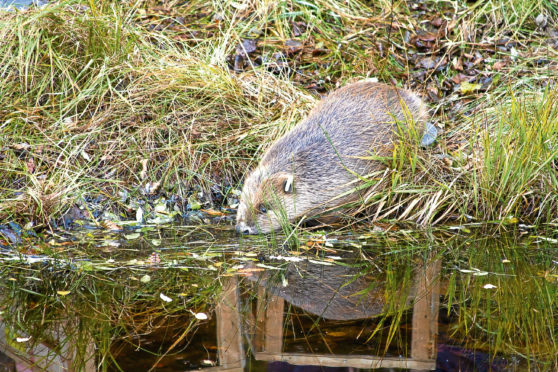A hint of grotesque distortion has crept into the never-ending procession of spleen-venting malcontents who increasingly characterise the owners and managers of Scotland’s estates and farms.
For a group of people who constantly proclaim to be the guardians of the countryside (and they are the only group of people in the country that thinks so), the evidence on the ground reveals an attitude towards nature that is one of thinly-veiled contempt at best, and almost indescribable at its worst. The young golden eagle shot in the Pentland Hills then dumped in the North Sea last month would be a breathtaking insult to all nature were it not for the fact that such disregard for the law has become routine.
The shooting, trapping, poisoning and otherwise disposing of all those tribes of nature against which it bears a grudge, is fast becoming a first resort rather than a last resort of land management. To say that it is a national disgrace that demeans Scotland in the eyes of the world is to understate the reality.
The hostility towards legally protected species, the obliteration of native forest in both Highland and Lowland Scotland, the draining of wetland, the artificial alteration of river courses, the annihilation of biodiversity at the hands of industrialised farming techniques, the uprooting of hedges and copses, the reckless use of chemicals, the intolerable extent of overgrazing, the clear-felling of plantation forest, and the ponderous, slavish pursuit of Victorian sporting traditions that would be laughable if it were not so catastrophic for biodiversity… these are the 21st Century stock-in-trade of the guardians of the countryside.
Routine practice fosters flash flooding, yet this, the species that invented clear-felling, heaps scorn and worse on beavers for cutting down trees and damming field ditches. The ethos that prevails can be summed up thus: don’t work with nature, fight it, and where necessary, kill it. Then dump its body where they won’t find it.
A third of tagged young golden eagles have disappeared, and God alone knows how many of the untagged ones. And sea eagles (the subject of some quite outrageous exaggeration about sheep predation), and red kites, and buzzards, and goshawks and sparrowhawks, and wildcats and pine martens… the list of intolerances goes on and on.
We have, quite literally, reached the position where the only land on which nature can feel relatively safe is owned by conservation interests. Not even our national parks are safe, nor will they be until they are owned by the nation and managed by a national park service with nature conservation as it first priority. Right now, the Loch Lomond and the Trossachs National Park is considering a development application by Flamingoland (“Yorkshire’s ultimate theme park and the UK’s most visited zoo plus a luxury resort village”, since you asked).
The result of all this is a landscape riven by confrontation. A consequence is that the freewheeling extremities of nature conservation will also start taking the law into their own hands, out of frustration at the lack of progress towards making landowners respect and live with the law and with nature.
It has already happened with the Tayside beavers. They were the result of escapes and from wildlife parks, and almost certainly the process was given an illegal impetus. But, the Scottish Government has subsequently legitimised them, having seen the wholly beneficial ecological results of its own official trial in Argyll, and having judged that the Tayside beavers are having a similar effect.
The evidence grows daily more persuasive that current land practice in much of Scotland fuels the kind of climate chaos which is now all around us and from Arctic to Antarctic. The status quo is not an option.
Public opinion is on nature’s side. The future in Scotland is in community buy-outs, in an expanding nature conservation sector, in tax breaks for land managers who foster biodiversity, in green tourism, in national parks owned by the nation, in increasingly stringent wildlife protection laws, in more reintroductions of missing species up to and including wolves (because they belong here and they are a necessary part of a philosophy which permits nature to manage nature).
The truth may be as unpalatable for some land-owning interests as it was for their Victorian ancestors but it’s still the truth: the only guardian of the countryside that knows how to do the job is nature itself.
